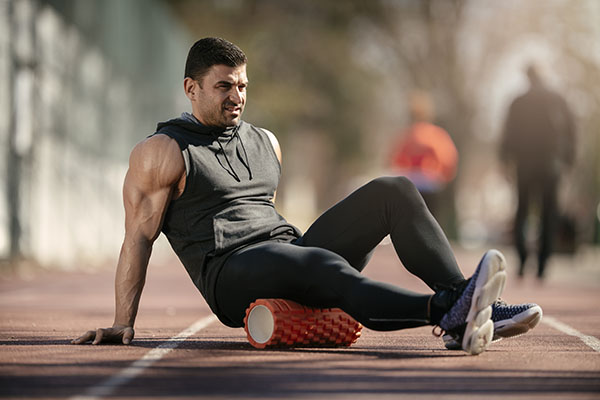How to Foam Roll Hamstrings
All in favor of tight hamstrings, say “I”! Total silence… Because nobody enjoys stiff tight muscles, especially hamstrings. I don’t know about you, but my legs can get pretty sore following a heavy cardio day. This includes those times when I stretch before and after the exercise, too.
If you’re trying to make the most out of each day in your workout week and are searching for ways to kick the stiff muscle to the side, foam rolling your hamstrings is the answer. Foam rolling is a self-myofascial release (SMR) technique that helps to relieve tightness, soreness and inflammation in the muscles. Some people prefer to foam roll their hamstrings before a workout, some prefer after a workout and some prefer both.

Whatever your preference, there are plenty of benefits that you can reap from foam rolling such as easing muscle pain, increasing your range of motion, temporarily reducing the appearance of cellulite aides in managing fibromyalgia symptoms and helps you to relax. Have I piqued your interest yet? If so, here’s the 411 on everything you need to know regarding how to foam roll hamstrings.
When to Foam Roll Your Hamstrings
The first thing you need to know about how to foam roll hamstrings is when to do it. The choice is really up to you. Some individuals prefer foam rolling before a workout, while others prefer foam rolling after. There is no “right answer” but the benefits will vary for everyone.
TriggerPoint 13″ GRID Foam RollerFree Online Instructional Videos
However, it’s important to know that when you spend too long on one spot, you risk bruising and injury. The risk of this is even greater on a “cold muscle” (aka before a workout). When rolling a cold muscle, you’ll want to ease into it with a softer pressure at first to avoid further damaging the fascia and causing inflammation.
How Long Should You Foam Roll
Another step in learning how to foam roll hamstrings is knowing how long you should do it. I swear sometimes I’ve been at the gym and it seems like people are foam rolling for over an hour. Personally, I believe that’s excessive. You can foam roll your hamstrings for about 30 seconds to a minute on each leg to help ease knots and soreness. Keep in mind – you don’t want to move too fast because then you may not be getting enough pressure. This means you won’t receive the benefits of rolling and it won’t do much for those stiff muscles.

When Should You Not Foam Roll
While you’re learning about how to foam roll hamstrings, you probably need to learn when you shouldn’t. First things first, you should not roll directly on a joint or bone. It’s also important that you don’t roll to where you experience an excessive amount of soreness. This may seem obvious, but if you’re severely injured, you should also avoid rolling your hamstrings. Another rule of thumb when rolling is to wait 24-48 hours between sessions. Give your body time to rest and recover before throwing it back in the mix.
321 STRONG Medium Density Foam Roller 13″ Foam Roller With Bonus 4K eBook
How to Foam Roll Hamstrings
Now that you know a bit about how to roll hamstrings, it’s time to break out the roller and get to work. Here’s how to roll hamstrings:
- Start in a seated position with your hands on the floor.
- Extend your left leg out in front of you and bend your right knee so it is supporting you.
- Put the foam roller beneath your upper left hamstring right below the glute.
- Using your hands and foot on the floor, rock back and forth to roll your hamstring. Roll enough so that your foot flexes down and slowly roll back.
- Do this for 30 seconds to 1 minute and then repeat on the other side.
Wrap Up
Foam rolling is a great technique to help relieve tight, sore and inflamed hamstrings.
In addition to how to foam roll hamstrings (see above), we covered knowing when to foam roll hamstrings, how long you should foam roll and when not to foam roll.
We are confident that if you begin foam rolling regularly, you will begin to notice a difference in your tight and overworked hamstrings!


